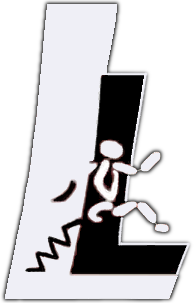Human-induced vibrations on building structures
Human-induced vibrations on building structures: biomechanical characterisation and structural mechanical modeling
Introduction
In this project, we will investigate and characterize human-structure interaction from two different perspectives — biomechanics and structural mechanics.
In daily activities (e.g. walking, jogging) we often encounter such circumstances that we traverse an area with different ground properties. In such cases our body has to manage the resulting change in external forces in order to adapt to the change in surface stiffness. In order to synchronize the gait and accommodate the changes in the environment during human locomotion, we need a comprehensive understanding of the underlying principles of system identification and adaptation mechanisms. The biomechanical approach is to develop concepts of the adaptation strategies based on experimental findings from human locomotion. The concepts will be translated into computer simulation models. We expect to better understand how the design of a biological body allows for an efficient and robust passive control to cope with the changes in locomotion.
On the other hand, during the interaction of humans with the environment (e.g. building structures), we also consider the effects of human movements on the dynamics of structures and the associated structural vibration responses. Based on the insights gained in the biomechanical studies, we will develop mechanical models for analyzing human-induced movements of structures, which takes the mechanical properties of humans into account. We also look at how the structures with different general and specific surface stiffness influence their vibrational responses. We expect to have a reliable interpretation of building structures and to provide a basis for better design concepts for building structures.
As a main effort of this research we aim at applying the strategies that humans employ to adapt to the environment into the analysis of human-induced movements of building structures, and developing new standards for safe and comfortable human interactions with buildings and structures (e.g. footbridges, sidewalks), as well as for a better serviceability of structures (e.g. vibration sensitive equipment in research facilities, production lines).
Objectives
From the biomechanics perspective we aim to better understand how humans adapt their gaits to the environment (e.g. different surface stiffness). We will investigate various adaptation strategies in two types of human gait (i.e. walking and slow running), and will provide a basis for the fundamental question of how leg stiffness and damping properties of the human leg adapt to the surface stiffness. We will provide a scientific framework for studying and analyzing adaptation techniques during human locomotion. The overall objective of this research is to characterize gait-specific adaptation mechanisms for coping with the environment with different ground properties during human locomotion. To this end, we will develop biomechanical models of body mechanics and extend them (for DFG application) to active adjustments through the neuromuscular system.
For the investigation in this project, biomechanical experiments with human subjects will be conducted at the Lauflabor Locomotion Lab at the Institute of Sports Science. Based on these experiments, biomechanical models capable of describing the system adaptation mechanisms (e.g. how stiffness and damping of the leg adapt to the environment) will be derived. Through the simulation models we will investigate passive adaptation mechanisms, i.e. how the passive properties of the leg adapt to the surface with different mechanical properties. We will look both at the local joint level and at the global leg level.
Work Program
There are three main tasks in the HUM_VIB project.
Task 1: Biomechanical Experiments at the Lauflabor Locomotion Lab
The goal of this task is to investigate how humans manage to adapt to different ground stiffness during walking, jogging (i.e. slow running) and running through conducting experiments with humans. In addition, we aim to assess the quality and the predictive power of the simulation models in Task 2 by comparing model predictions with experimental data.
Task 2: Biomechanical and Mechanical Simulation Models
The purpose of the Task 2 of the project is to identify the underlying principles of the adaptation mechanisms how stiffness and damping of the human leg adapts to the environment (e.g. various surface stiffness) in walking and running (e.g. slow running). The models will be adapted to become capable of describing and explaining the human experiments in the Task 1.
We will focus on passive adaptation, namely, how the passive properties (e.g. damping and stiffness) of the leg accommodate changes in surface stiffness. We focus on compliant ground and damping ground. We can consider the damping of the whole leg, or we can also consider the damping at the joint level (ankle, knee and hip joint). Therefore we can look both at the local joint level and at the global leg level.
Task 3: Research Conclusion and Writing Report & Proposal
At this task, we will complement the results from the Task 2 with an analysis if our expectations in the hypotheses are true or not, and what aspects are to be improved for further research. We will conclude the research by writing the project report and by submitting conference proceeding papers regarding the insights gained in the project.
In addition, the insights acquired in this research will be used to apply for a research grant (e.g. DFG, industry grant, other national/international funding) in order to further develop universal and reliable loading models for human-induced dynamic movements of building structures.
Research Schedule





